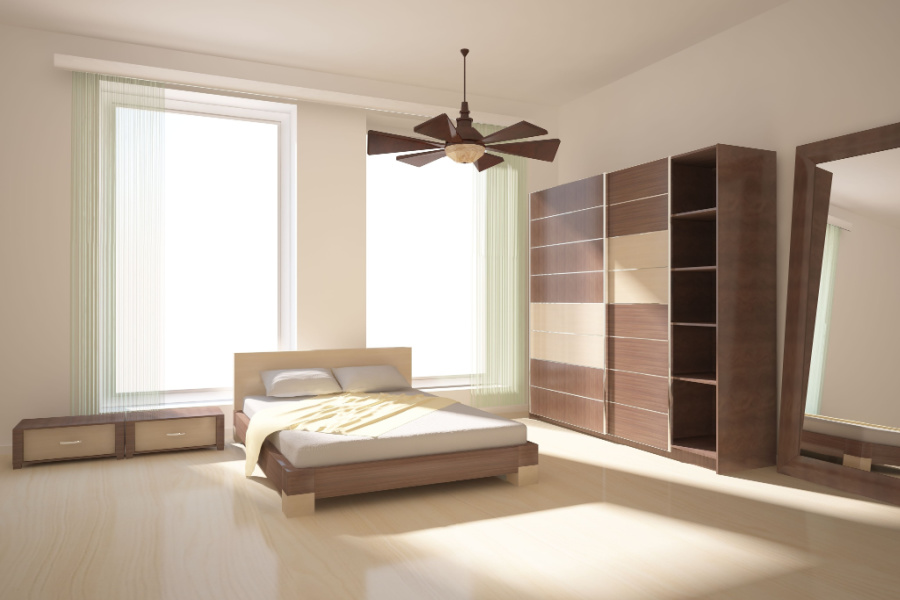Logistics
Warehousing & Fulfillment
Transportation
Industries
Technology & Innovations
E-commerce
E-commerce Fulfillment Services
Lease & Maintenance
Semi Trucks
Logistics
E-commerce
Lease & Maintenance
Buy Used Trucks

When it comes to getting your customers the perfect piece of furniture for their home, the last mile of delivery can be the most crucial yet challenging aspect of the entire supply chain. As consumers increasingly demand convenience and transparency in their shopping experiences, furniture companies find themselves grappling with the complexities of timely, efficient, and satisfactory delivery services.
Customer expectations play a significant role in last mile delivery of big and bulky products, with consumers demanding timely delivery, professional installation services, and careful handling of their items. Failure to meet these expectations can result in customer dissatisfaction and negative reviews, impacting brand reputation and customer loyalty. Furthermore, urban logistics present additional challenges, including traffic congestion, limited parking, and restricted access to certain locations, which require efficient route planning and navigation strategies.
To address these challenges, retailers and delivery service providers must invest in infrastructure, technology, and specialized training for delivery personnel. Proper packaging, securing items during transit, and implementing quality control measures are essential to prevent damage and ensure product integrity upon delivery. By proactively identifying and mitigating potential obstacles, companies can optimize their last mile delivery operations for big and bulky products, enhance customer satisfaction, and maintain a competitive edge in the marketplace.
In this article we’ll explore the challenges hampering companies with last mile furniture delivery and how you can overcome those challenges to keep customers happy.
Last Mile Challenges for Furniture Delivery
Last mile delivery of big and bulky products, like sofas, beds, dressers, and other furniture, presents a unique set of challenges for retailers and delivery service providers. These challenges include handling and transporting large items, limited vehicle capacity, complex assembly and installation requirements, and accommodating customer scheduling preferences. Delivery personnel must navigate narrow doorways, staircases, and tight spaces while ensuring the safe and careful handling of heavy and sometimes delicate items. Additionally, coordinating delivery schedules to meet customer preferences for specific time windows adds complexity to logistics operations.
Ensuring that delivery personnel are adequately trained to handle furniture items with care is another significant challenge. Fragile or bulky items require specialized handling techniques to prevent damage during transportation. Moreover, having a skilled team equipped with problem-solving abilities can address unexpected challenges on-site effectively.
Access to suitable vehicles capable of transporting large and often irregularly shaped furniture items poses yet another obstacle. Maintaining a fleet of vehicles tailored to the specific needs of furniture delivery can be capital-intensive and logistically demanding for companies, particularly smaller ones.
Timely delivery is crucial in the furniture industry, where customers often have strict timelines and expectations. Delays can lead to dissatisfaction and negatively impact the overall customer experience. Coordinating multiple deliveries within tight schedules while accounting for unforeseen circumstances requires meticulous planning and execution.
One of the primary challenges in last mile delivery for furniture companies is the integration of advanced technology into their processes. From route optimization software to real-time tracking systems, the seamless integration of technology is essential for enhancing efficiency and visibility throughout the delivery journey.
Providing end-to-end visibility and transparency to customers regarding the status of their deliveries remains a challenge. Customers expect real-time updates, including tracking information and accurate delivery windows. Failure to deliver on transparency can erode trust and damage brand reputation.
Overcoming the challenges
To overcome these challenges, furniture companies can implement various solutions. Embracing cutting-edge technology solutions such as route optimization software, GPS tracking, and automated communication systems can streamline operations and enhance visibility.
Prioritizing training and development programs for delivery personnel is essential to ensure that they handle furniture items with care and possess the necessary problem-solving skills. Additionally, leveraging fleet management solutions can optimize vehicle utilization and ensure the availability of suitable vehicles for furniture delivery.
Implementing advanced scheduling and routing algorithms enables companies to optimize delivery routes, minimize travel time, and maximize efficiency. Real-time monitoring and adaptive route planning capabilities empower companies to proactively address delays and disruptions, ensuring on-time deliveries.
Enhanced customer communication is also critical. Implementing transparent communication channels and providing customers with real-time updates throughout the delivery process fosters trust and satisfaction.
How can a 3PL help?
Outsourcing last mile delivery to a third-party logistics (3PL) provider can offer significant benefits. Partnering with a reputable 3PL grants access to established processes and best practices refined through years of industry experience.
3PLs maintain a pool of trained drivers and a diverse fleet of vehicles, ensuring the availability of resources to meet fluctuating demand levels. This eliminates the need for companies to invest in and manage their delivery personnel and vehicles, reducing operational complexities and costs.
Leading 3PLs invest in advanced technology solutions to optimize delivery operations and enhance visibility. By leveraging the technological capabilities of 3PL partners, furniture companies can access cutting-edge tools and platforms without the need for significant upfront investments.
Strategic placement of distribution centers and forward deployment of inventory enables 3PLs to minimize transit times and enhance delivery speed. By utilizing strategically located facilities, 3PLs can efficiently serve diverse geographic areas and meet varying customer demands.
Outsourcing last mile delivery to a 3PL allows furniture companies to focus on their core competencies and strategic initiatives. By entrusting delivery operations to a reliable partner, companies can allocate resources more efficiently, drive innovation, and enhance overall business performance.
While the challenges of last mile delivery in the furniture industry are formidable, strategic planning, technological innovation, and leveraging the expertise of third-party logistics providers offer viable solutions. By embracing advanced technology, investing in training and development, and partnering with trusted 3PLs, furniture companies can overcome hurdles and deliver exceptional service that delights customers and drives business success.